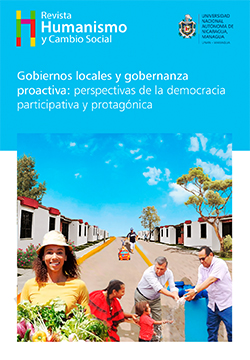Contribution of archaeological studies to local development (University, municipal governments, community leaders and key stakeholders)
DOI:
https://doi.org/10.5377/hcs.v20i20.15830Keywords:
Social archaeology, inter-institutional articulation, local development, conscious participation, cultural identityAbstract
The articulation of cooperation strategies between the University, public institutions, municipal governments and local stakeholders (community leaders, farm owners, teachers, pastors, among others) represents an important effort that contributes to the enhancement of the archaeological heritage of the communities that own these resources. Efforts that, in economic, social and cultural terms, represent great benefi ts for the families and their inhabitants, creating synergies between knowledge-science-society. The extensionist experiences, from social archeology, in the municipalities of Santa María, City of Nueva Segovia, Diriá and Granada, show the impact of such articulation, from the recognition and re-reading among the inhabitants, of their environment and how this new way of understanding it, contributes to the strengthening of their local identities. The scientific contribution provided by UNAN-Managua, together with the knowledge shared by the inhabitants of these municipalities during the interaction period (the time the research lasted) represents a source that contributes to the feedback process between the researchers and the community. In this sense, the main purpose of this work is to share successful experiences of articulation between the University and local governments in archaeological research, to get to know their historical and cultural environment, so that it can be used to the benefi t of the families, communities and the support of the Higher Education Institutions (HEI) can give.
Downloads
323
References
Balladares, S et al. (2022). Rescate Ancestral para el Desarrollo Comunitario: Ciudad Perdida, Santa María de Nueva Segovia. Informe técnico. Inédito. CADI, Facultad de Humanidades y Ciencias Jurídicas, UNAN-Managua. Nicaragua.
CADI. (2021a). Sitios Arqueológicos del Municipio de Diriá: Documentación y Registro. Informe fi nal de investigación. Centro Arqueológico de documentación e Investigación. CADI, UNAN-Managua.
CADI. (2021b). Reconocimiento y Documentación de Sitios Arqueológicos. Municipio de Santa María Nueva, Segovia. Informe Técnico. Inédito. CADI, Facultad de Humanidades y Ciencias Jurídicas, UNAN-Managua, Nicaragua.
Delfino et al (2016). La Arqueología Socialmente Útil y La Arqueología Pública. Refl exiones desde La Praxis. Memorias del XIX Congreso Nacional De Arqueología Argentina.
Delfi no, D. y Rodríguez, P. (1991). Crítica de la arqueología pura: De la defensa del patrimonio hacia una arqueología socialmente útil. https://arqueologiageneralunca.files.wordpress.com/2016/04/delfi no-yrodriguez-crc3adsitca-de-la-arqueologc3ada-pura.pdf
Lorenzo, J. L. (1976). Hacia una Arqueología Social. Reunión en Teotihuacán (Octubre,1975). Coord.: José Luis Lorenzo. Publicaciones del INAH. México.
Manasse, B. (2012) Arqueología en el borde andino del Noroeste Argentino: Sociedades del último milenio en el Valle de Tafí, provincia de Tucumán, República Argentina. Tesis Doctoral. Facultad de Ciencias Naturales y Museo, UNLP. file:///C:/Users/Revista/Downloads/tesis_1212OCR%20(1).pdf
Mercuri, Cecilia (2021). Repensando el territorio. Sobre algunas cuestiones desde la experiencia de campo en el NOA. 12° CONGRESO ARGENTINO DE ANTROPOLOGÍA SOCIAL La Plata, junio y septiembre de 2021.
UNESCO (2014). Manual de gestión del patrimonio mundial cultural. París Francia ©UNESCO / ICCROM / ICOMOS / UICN, 2014 ISBN 978-92-3-301223-3.
Zapata, F. y Rondán, V. (2016). La Investigación Acción Participativa: Guía conceptual y metodológica del Instituto de Montaña. Lima: Instituto de Montaña.
Downloads
Published
How to Cite
Issue
Section
License
Copyright (c) 2023 Universidad Nacional Autónoma de Nicaragua, UNAN-Managua

This work is licensed under a Creative Commons Attribution-NonCommercial-ShareAlike 4.0 International License.




